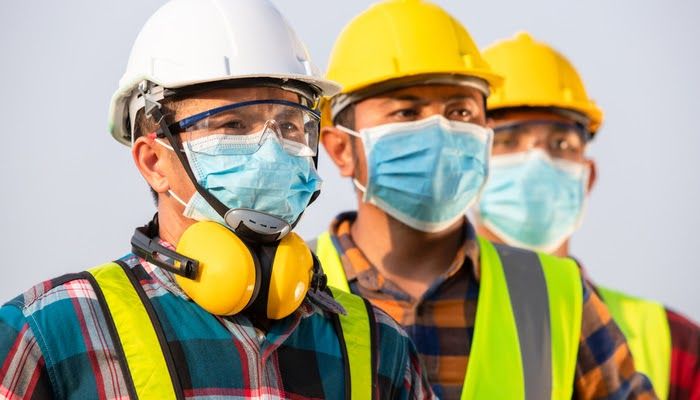Construction is a dangerous business to work in. Between 2019 and 2020, 61,000 workplace injuries were reported to HSE (Health and Safety Executive) by the construction industry. There were also 40 fatal injuries to construction workers during this period.
While working in construction carries more risks than your standard office job, many accidents and injuries can be prevented by wearing PPE (personal protective equipment). Typical PPE for construction workers includes Hi-Vis clothing, hard hats, safety boots, body protection suits and safety glasses. Your employer will advise which PPE you’re required to wear to provide you with the best protection. Let’s explore some of the rules around PPE which should be followed by construction workers.
You must wear any PPE provided by your employer
It’s crucial to comply with any request from your employer to wear PPE. You will most likely be informed of the request in person or via email, but your employer should display safety signs to indicate when you must wear PPE.
You are legally obliged to wear any PPE you’re provided with, so choosing not to wear it is breaking the law. You’ve been asked to protect yourself for a reason, so don’t put yourself at risk of illness or injury by ignoring it. The consequences of an injury on a construction site can be devastating, so you should do everything you can to prevent something going wrong.
Wear your PPE correctly
Along with wearing your PPE, it’s extremely important to ensure you use it in the correct way, as incorrect usage can increase the risk of injury or illness. For example, wearing a protective face mask to prevent breathing in sawdust particles is pointless if the mask doesn’t cover your nose as well as your mouth. If you’re unsure how to use your PPE, ask your employer for advice.
PPE must be suitable for the risk and the job at hand
The PPE your employer provides you with must be appropriate for the risk and the task you are carrying out. For example, a dust mask is suitable when you are sawing wood, but it’s not going to provide adequate protection when working with harmful gases. It is your employer’s responsibility to provide appropriate PPE, so if what you’re given is unfit for the job, this should be raised immediately.
Take care of your PPE
Don’t abuse your PPE, as this could affect how well it protects you when you’re wearing it. For example, dropping your hard hat could damage it and increase your risk of injury in an accident.
Ensure any equipment is replaced if it shows signs of wear and remember to clean or replace any filters or structures in your PPE which require it. If you are unsure what maintenance is needed for your equipment, check the instructions or ask your manager for advice.
Ask for training when needed
Most PPE is easy to use and requires few steps to put on, however you may find your employer asks you to use more complex equipment for certain tasks, such as a breathing apparatus or a complicated harness. Your employer is responsible for providing training to ensure you understand how to use the equipment, however if you need further support, request additional training or advice.






